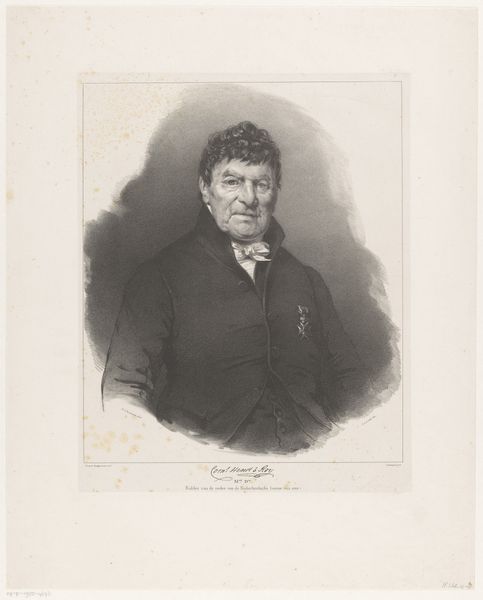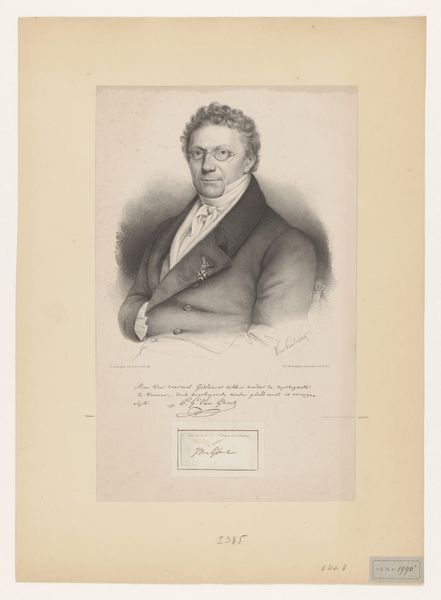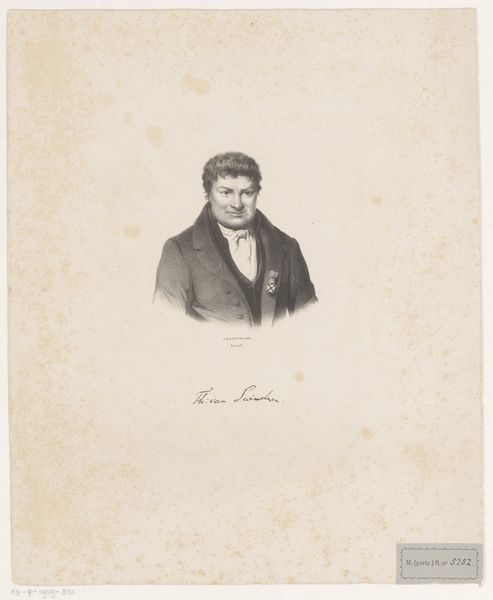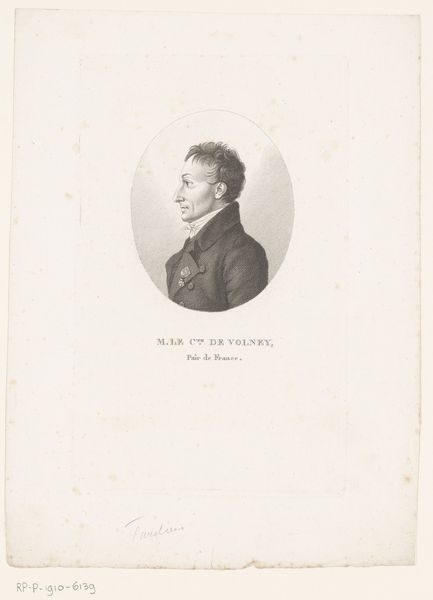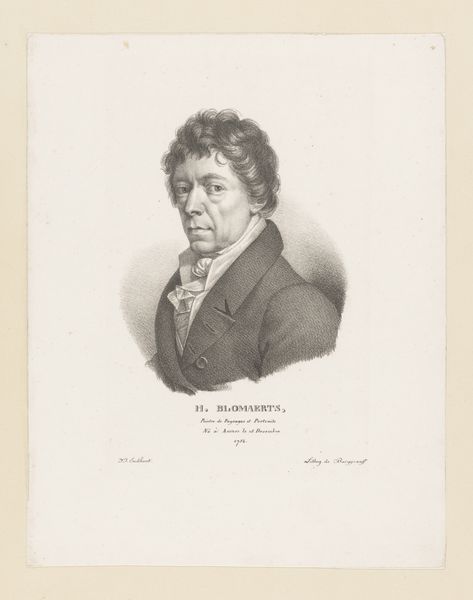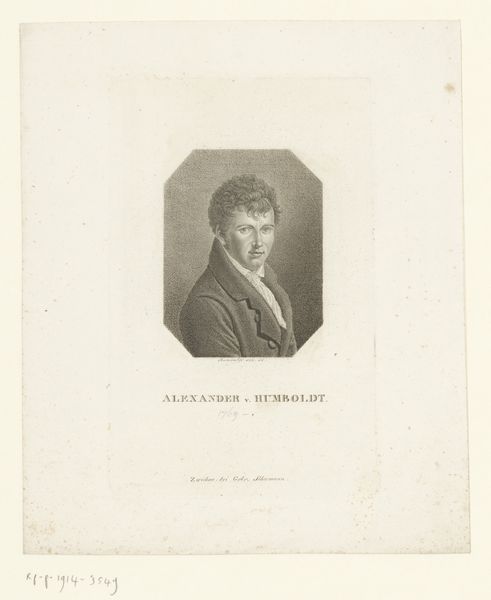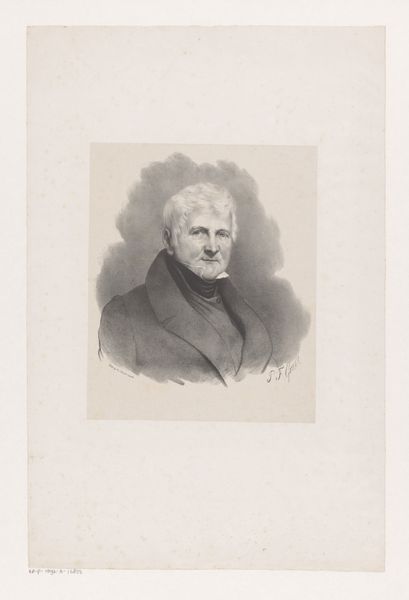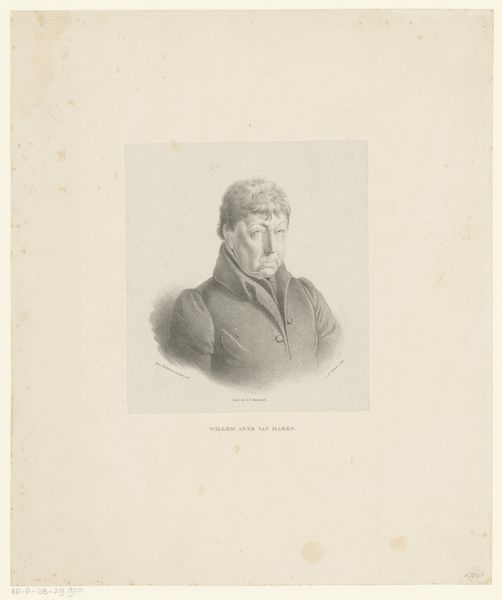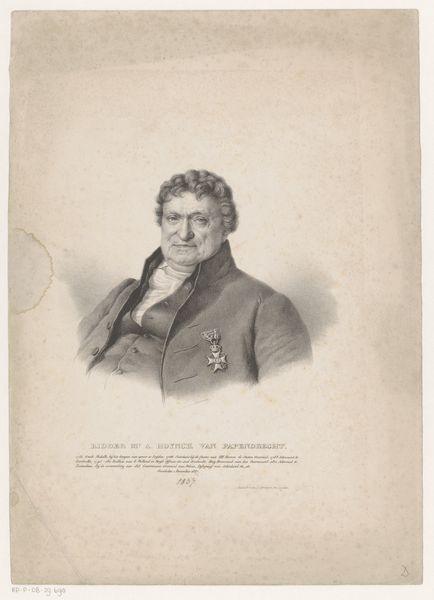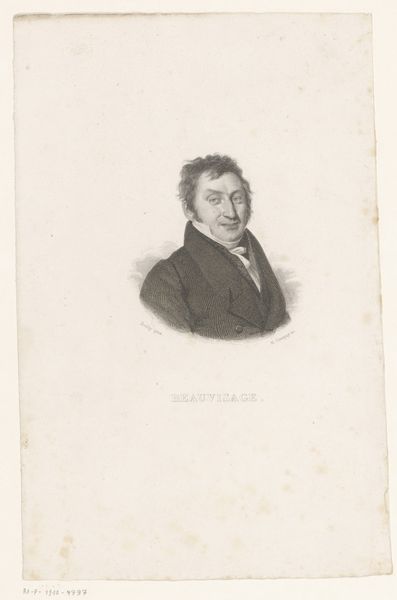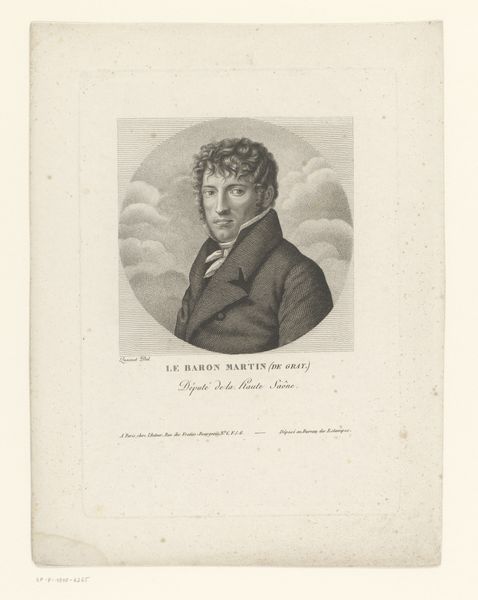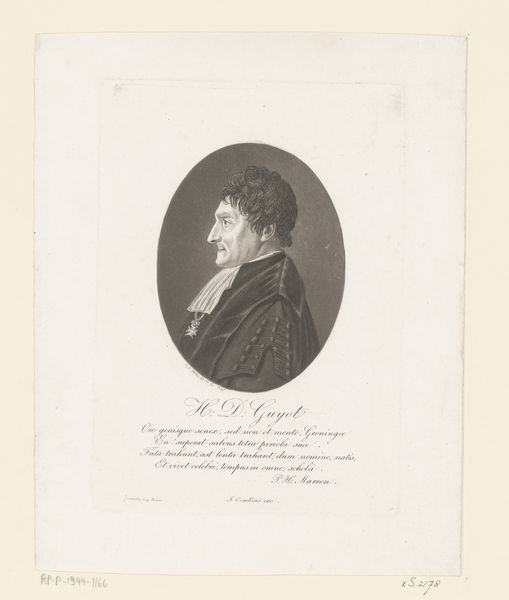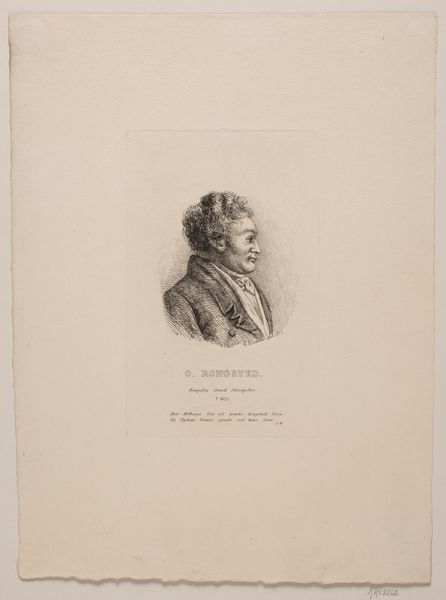
drawing, pencil
#
portrait
#
pencil drawn
#
drawing
#
pencil sketch
#
pencil drawing
#
romanticism
#
pencil
#
realism
Dimensions: height 510 mm, width 350 mm
Copyright: Rijks Museum: Open Domain
Curator: Here we have Pieter van der Meulen’s "Portret van J.M. van Roggen," created in 1834. It resides here at the Rijksmuseum. Editor: The first thing that strikes me is the intimacy of it. Even though it’s a formal portrait, the pencil sketch gives it a raw, almost immediate feel. Curator: Absolutely. The artist's choice of pencil elevates the personal element. The Romantic era embraced such subjects. This was created during a shift when artists explored individual expression, favoring realism. A portrait signifies status and memory; therefore, who Van Roggen was in his world carries immense importance. Editor: I agree. I wonder about the paper itself, how it was made and processed. Pencil on paper suggests accessibility, right? Was this meant for wider circulation, or a more personal audience? And the labour of drawing such fine lines! Was this accessible for many, or reflective of luxury? Curator: It raises questions of accessibility for the rising middle class, that's true. Think of portraits of previous generations. They were exclusively rendered for wealthy aristocracy. Pencil sketches enabled them to document themselves with relatively inexpensive techniques. This reveals evolving ideas around identity. Editor: Fascinating. And considering that Romanticism privileged emotional expression, could the choice of pencil over paint perhaps emphasize a directness of feeling, bypassing some of the artifice associated with more established art forms? Curator: Precisely. The use of such a humble material reinforces the Romantic ideal of authenticity. What is he trying to convey through the very specific choice of this medium? Does this portrait, rendered in pencil, capture the soul of J.M. van Roggen with the same emotional precision as a grand oil painting might fail? The debate is worth it. Editor: Right, seeing how a specific choice of material embodies and communicates complex social and personal narratives like status, emotion, and emerging values of a particular time... Curator: Examining the art history of status and representation through material culture lets us understand an evolving collective psychology of society. Thank you for joining me. Editor: Thanks, that was fascinating. The social narratives intertwined within materiality truly transformed my appreciation for pencil’s emotional and representational powers here.
Comments
No comments
Be the first to comment and join the conversation on the ultimate creative platform.
